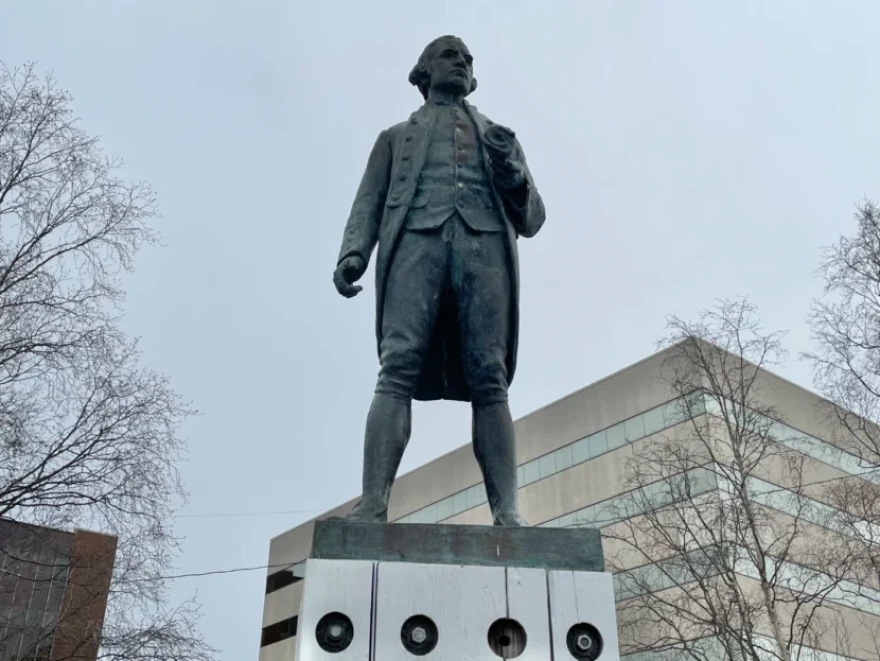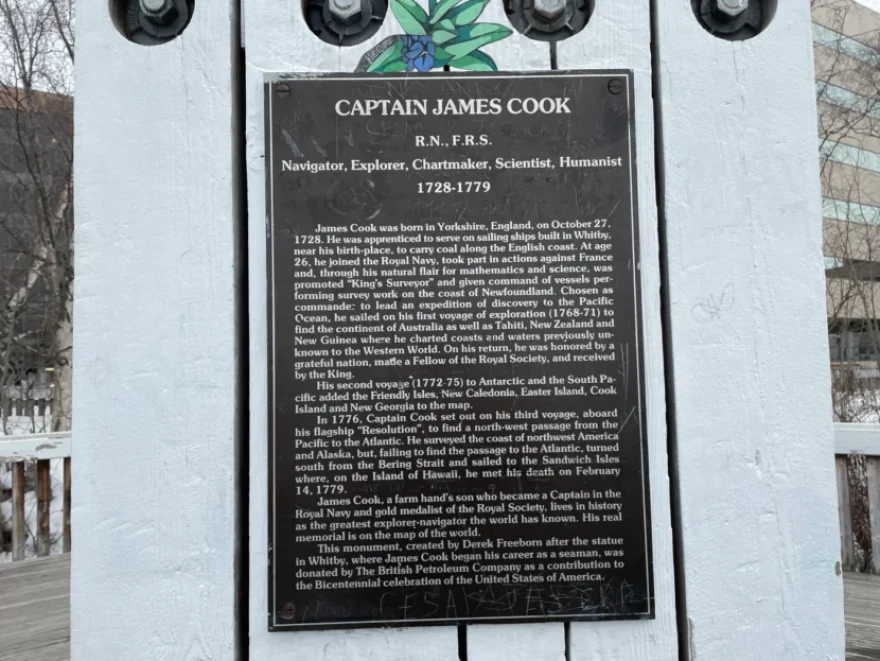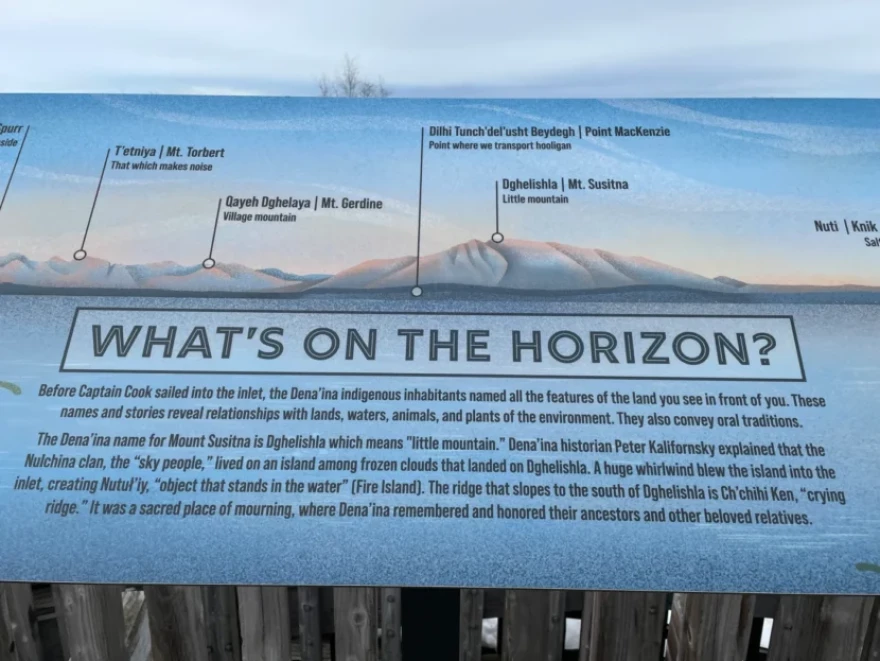A monument to Captain James Cook in downtown Anchorage hails him as “greatest explorer-navigator the world has ever known.” The plaque under the life-size statue of him highlights Cook’s travels, including Cook Inlet, where Anchorage is located.
The inlet was no discovery, though. For at least a thousand years, the region has been home to the Dena’ina Athabascan people.
The Eklutna Tribe, Anchorage Park Foundation and Anchorage Museum last week unveiled a Dena’ina place names sign near the Cook monument.
The new sign is due in part to the Black Lives Matter movement. In 2020, activists pushed for the removal of symbols of the slave trade, colonization and other injustices. Similar calls were made in Anchorage to have the Cook monument taken down.
Anchorage's then-Mayor Ethan Berkowitz said he would defer to the Eklutna tribe.
“I’m not really in favor of tearing down monuments in this case, but I want to use it as an opportunity to tell the complete story,” said Native Village of Eklutna President Aaron Leggett, Dena’ina Athabascan, speaking at the March 23 unveiling. He’s also senior curator of Alaska history and Indigenous culture for the Anchorage Museum.
“One of the ways of doing that was (using) this great vista that you can see here to highlight the Dena’ina names,” Leggett said. “So, what are the names that existed here when Captain Cook arrived at the end of May in 1778?”
“This gives you a Dena’ina view and shows that Cook didn’t discover these places, he simply documented them,” Leggett said.
The new sign reads, in part, “Before Captain Cook sailed into the inlet, the Dena’ina Indigenous inhabitants named all the features of the land you see in front of you. These names and stories reveal relationships with lands, waters, animals, and plants of the environment. They also convey oral traditions.”
Anchorage Parks Foundation Executive Director Beth Nordland said the new sign is part of a larger project.
She said the foundation has been working with Leggett and the Native Village of Eklutna “for some years now on Indigenous place names and the conversation about being able to add historic and cultural value interpretation in our parks and on our trails.” The new sign is one of a handful of similar projects at Anchorage parks.
“Today is a small victory, but a beautiful victory,” Nordland said. “And we want to keep going, making these small and large changes in our public spaces for Anchorage and Anchorage visitors to enjoy.”
After his speech at the unveiling, Leggett added, “I think for our tribal members in particular, it’s important that our future generations know who they are and can be proud of who they are and can see themselves as part of this place because we have been here for well over 1,000 years.”
This story originally appeared in Indian Country Today and is republished here with permission.



